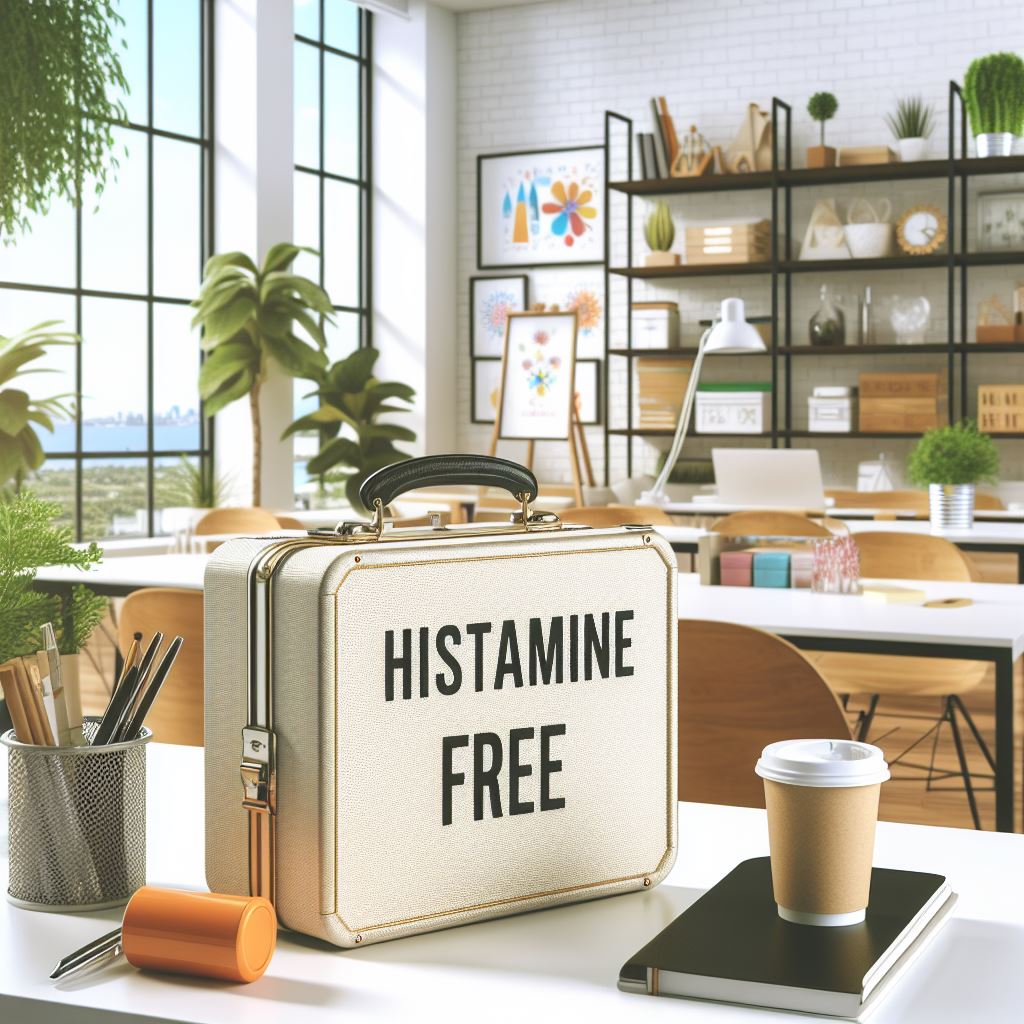In today’s fast-paced world, where workers often spend long hours in the office, it’s crucial to make sure you eat healthy at work. This can be a particular challenge for people with histamine intolerance, as many foods cannot be taken along unrefrigerated and going to the canteen is usually not possible. In this blog post, I take a look at how you can eat healthily in the office despite histamine intolerance.
What is histamine intolerance?
Histamine intolerance is a disorder in which the body has difficulty breaking down histamine, leading to an accumulation of histamine in the body. This can lead to various unpleasant symptoms such as headaches, gastrointestinal complaints, skin rashes or itching. Diet plays a decisive role in coping with this intolerance. The histamine supplied through food, which is an issue in histamine intolerance, can either be contained in the food or it is formed by bacteria during storage. The former we can avoid, the latter we can only influence. You can find detailed information about histamine intolerance here on the nmi portal.
My tips for a low-histamine diet in the office:
Homemade meals
Avoid processed foods and ready meals, which often contain high levels of histamine. Instead, you should prepare your meals at home to keep control of the ingredients.

Image: Created with AI, 23.1.2024 at 7:56
There is a lot of well-tolerated fruit and vegetables. This is an excellent choice for snacks in the office. You can easily prepare these foods and take them with you for the day in airtight snack boxes.
Instead of a handful of nuts (intolerable) you could snack on a handful of macadamia nuts, tiger nuts and an apple. Blueberries, carrots or a peach are also well-tolerated snacks. You can have the app “Ask Ingrid”, for example, show you the types of fruit and vegetables you can eat. These tips will help you avoid cravings in the office.
If there is a fridge in the office, prepare the food at home and bring it with you. All bacteria die during cooking. If you fill the food hot into airtight jars, seal them tightly and store them in the fridge after cooling, no bacteria can grow and therefore no histamine can develop. Uncooled transportation to work is not a problem. You can also take the food to the canteen and eat it there with your colleagues instead of alone in the office.
Attention to drinks
Drinks can also contain histamine. Choose low histamine options such as fresh rooibos tea or water to cover your fluid needs. Water, for example, can be spiced up with a small dash of Verjus.
Avoid coffee or other pick-me-up drinks, as they are usually not tolerated by histamine intolerance sufferers. However, coffee is tolerated very differently, as the community rating in the Frag Ingrid app shows. 43% of those exclusively affected by histamine tolerate it sometimes or in small amounts, 37% tolerate it well1).
Histamine intolerance can be challenging, but with proper planning, a bit of individual trial and error, and conscious choices, you can maintain a healthy diet in the workplace. Investing in home-cooked meals, fresh fruit, vegetables and low-histamine snacks will not only boost your health, but also increase your work performance and general well-being. Remember that proper nutrition not only plays an important role in your well-being at home, but also in the office.
1) Ask Ingrid community rating, n=133, as at 24.1.2024
